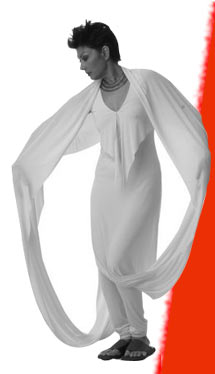There is an Indian Summer on in London’s spring. The sun is harsh, the heat intense. And unlike at home, no fans or air conditioners. Locals rejoice, I sweat
But there is another Indian Summer on here too. The South Bank Centre is celebrating its second Alchemy Festival, a ten day extravaganza of performances, debates, workshops, lectures, installations and poetry readings of things Indian, South Asian and especially British South Asian. There are the normal suspects from India – Muzaffar Ali and his Sufis; Alarmel Valli and Kailash Kher. Of much more interest to me are the second generation of British Indian performers.
Nearly three decades ago, with the British policy of encouraging the ethnicity of ethnic groups while at the same time encouraging them to find their diasporic identity, several artists emerged on the scene to become mainstream British celebrities – Anish Kapur, Shobhana Jaisingh, Tavleen Singh, and the gorgeous voiced WOMAD promoted Sheila Chandra. Whether openly accepting of their origins or doing so unconsciously, these became British names. On the front of arts administration too, Mira Kaushik of Academy and Piali Ray of SAMPAD in Birmingham took on the role of fostering Asian talent, giving them roots but encouraging a British Asian identity. This was in direct contrast to the artist of Asian descent in the United States, where Indian performers remain Indian performers, and not a single name has become an American mainstream artist. (Could this be a result of the American melting pot theory, where everyone must become assimilated; their ethnicity becoming a marginal concession of cute ‘stay in touch with the home culture’?)
What the first generation artists started in Britain, the next is taking on. There are the dub poets and there are performers like Akram Khan who work with big names in set design, music and costumes. Nothing Indian here, except their core – and their colour and training, Kathak in this case. There is the superb Susheela Raman, with a powerful base voice, Carnatic training, frizzy Afro hairstyle and ‘I will take on the world’ attitude. As she sings Vel Vel Muruga in rock style freaking out on stage, I smile inwardly at what the keepers of the Sabarimala temple would think of this – they who are horrified by a woman of menstruating age coming anywhere within the vicinity of the temple.
There is Jason Singh who calls himself a vocal sculptor and beat boxer, who sets off amazing rhythmic combinations with his mouth, then electronically manipulated to create a layered soundscape of unexpected sounds and beats. His collaboration with our own Kutla Khan, also worked through a processor, yields a delightful array of sounds and music. In the dance field too there are younger people, multiple trained in Indian and Western forms forging new landscapes.
These are not artists trying to create fusion. They are rather living a new reality as Diasporic Indians, and trying to find the reflections of those concerns, those influences, those fragrances. Some of them are succeeding some are not. Why then is this breed of British Asian artists so different in their search and their paths from other Diasporic artists?
Asians coming to Britain were primarily of working class stock, having often been migrants to East African countries before landing on these shores. This was very different from the bright super achievers that went to the US and now go to Europe and Australia. The latter perhaps didn’t have to fight the street fights of the poor immigrant. They didn’t quite have the same need for identity and space. They were already accepted to a large degree because of what they brought to the new country, brains and expertise.
Could this need to find their own space have lead the British Diasporic Asian into this blossoming Alchemy? Perhaps. But the fact is, this Indian summer is filled with luscious mangoes.
April 24th, 2011, DNA

